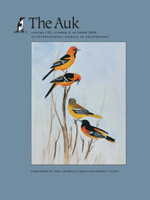Several recent studies have investigated how different proximate mechanisms of color production contribute to sexual dichromatism. These studies suggest that carotenoid pigments—which are frequently subject to sexual selection—are more strongly associated with sexual dichromatism than melanins. This reasoning implicitly assumes that increased male elaboration leads to sexual dichromatism. However, sexual dichromatism can be generated through multiple evolutionary pathways, including decreases in female elaboration. We examined whether evolutionary changes in carotenoid- and melanin-based plumage were correlated within New World orioles (Icterus spp.), a genus in which male elaboration is ancestral and only female elaboration varies. We found a significant correlation between evolutionary changes in the degree of carotenoid and eumelanin sexual dichromatism. These findings differ from those of previous comparative studies and suggest the possibility of interesting differences when different evolutionary pathways—such as changes in male versus female coloration—lead to sexual dichromatism.
How to translate text using browser tools
1 October 2008
Evolution of Sexual Dichromatism. 2. Carotenoids and Melanins Contribute to Sexual Dichromatism in New World Orioles (Icterus spp.)
Christopher M. Hofmann,
Thomas W. Cronin,
Kevin E. Omland
ACCESS THE FULL ARTICLE

The Auk
Vol. 125 • No. 4
October 2008
Vol. 125 • No. 4
October 2008
Comparative methods
Icterus
independent contrasts
loss of elaboration
sexual dichromatism




